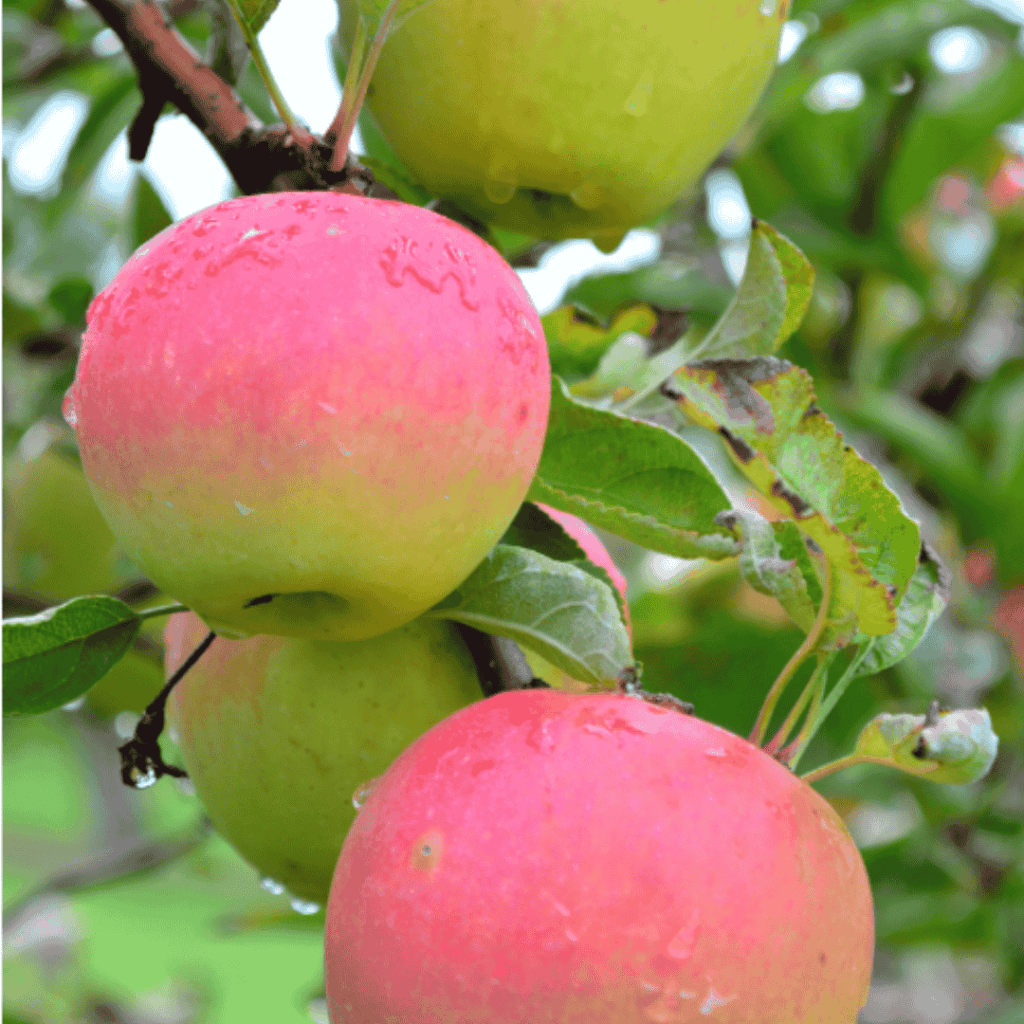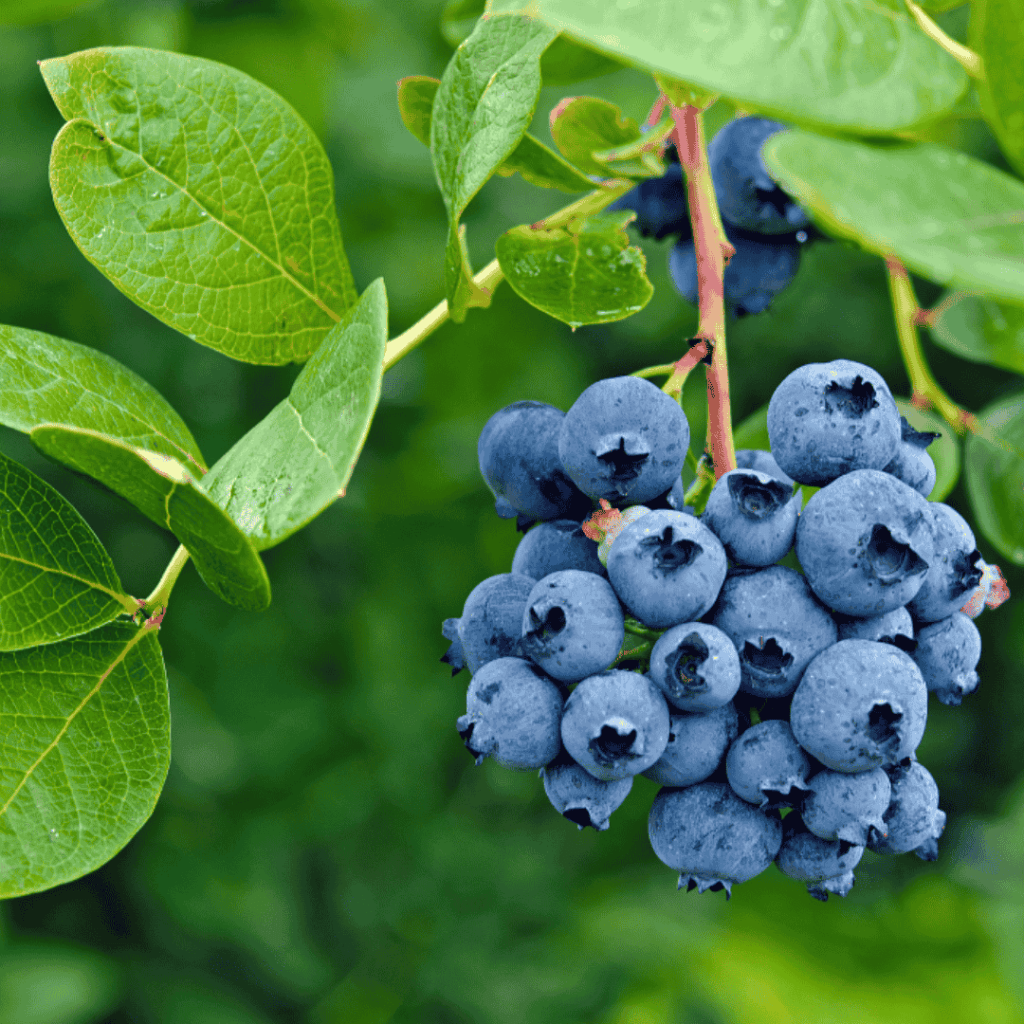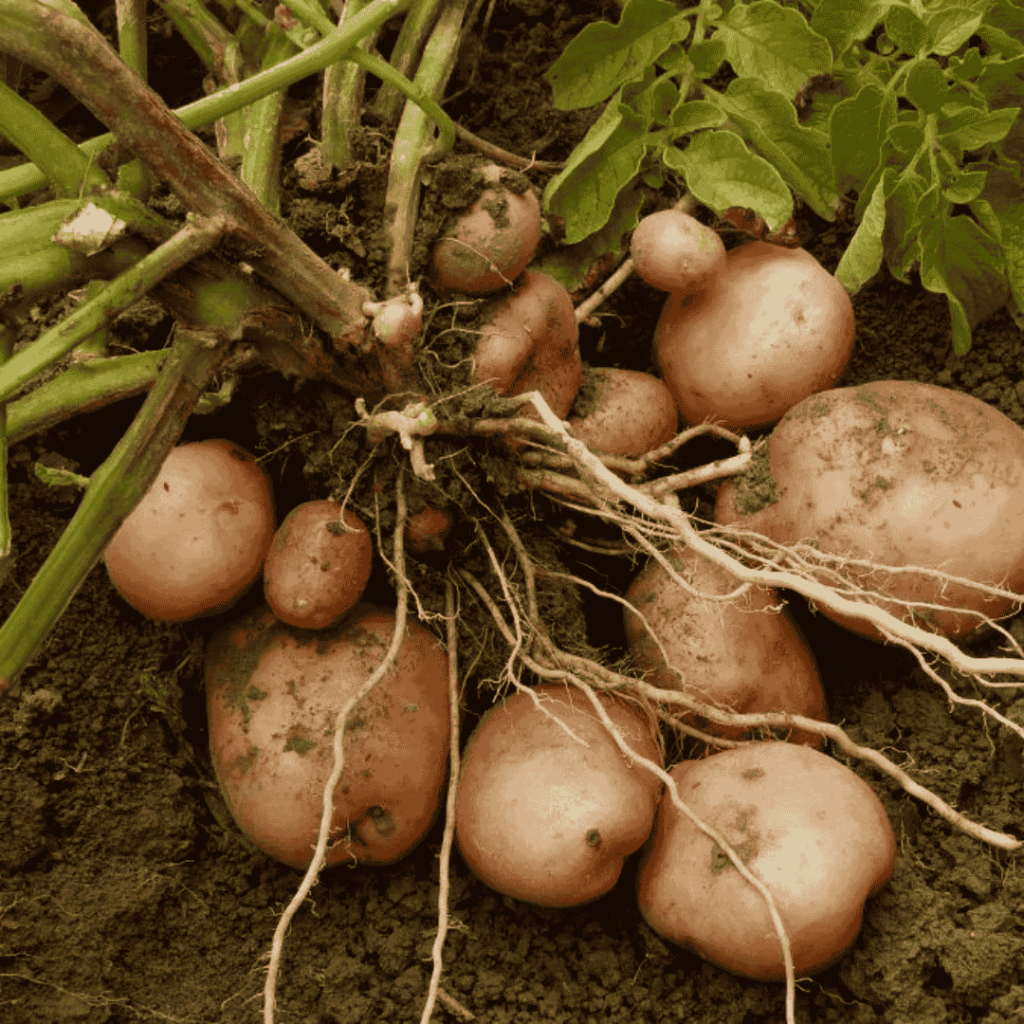Malus domestica
Growing your own fruit can be very rewarding. It can also be a lot of work. Picking out your fruit tree is probably the most fun part though so let’s start there. First up is the Honeycrisp apple. Shown in the picture below, these apples are not only delicious but they are also gorgeous!

Honeycrisp apples are hardy to zone 3 so that makes them a great apple to start a backyard orchard in Central Oregon. Don’t be in a hurry for your first harvest. This apple and most all fruit trees will take 2-5 years to bear fruit. That’s why we like to bring in more established, containerized fruit trees so that you are a little further ahead in the game than those buying bare root trees. You want to choose the perfect spot for your fruit tree before you even head to the nursery. If possible, monitor the potential planting site for a week or more to ensure the fruit tree will get the full sun exposure it needs. You also want to make sure that the deer can not access your fruit tree at all. Something important to keep in mind if you are planting along a fence line. You can find dwarf and semi-dwarf size options for your Honeycrisp apple. A true dwarf will grow about 8-10’ tall and wide which makes for easy picking. A semi-dwarf which is usually more common to find on our nursery floor will grow to 12-15’ tall and wide. A fruit picker basket is usually all you need to pick the fruit that is out of reach on a semi-dwarf tree.
Gala apples are another apple that is hardy to zone 3 which is music to our high desert ears! While the Honeycrisp lovers are certainly devoted to their apple the Gala lovers are perhaps sweeter? OK maybe not but the flavor profile of a Gala apple certainly is! They are sweet apples with almost no tartness yet still very crisp.
The Gala is actually a cross between a Kidd’s Orange Red and a Golden Delicious. Interestingly, the Kidd’s Orange Red is an offspring of the Cox’s Orange Pippen and a Red Delicious. So no wonder it was chosen to take part in the making of the sweet Gala! If you are unfamiliar with these apple varieties no one would blame you. It’s not common to see Kidd’s or even Pippens regularly stocked at your grocery store. Getting to know apple flavor profiles is a fun party to put together. Get as many varieties as you can find and set them up to sample in a blind tasting. Then let the voting begin!
The real reason you want to get to know your apple varieties is because with most fruit trees you actually need to plant more than one variety for cross pollination. Pollination of your fruit tree can be affected by wind and weather as well as our precious honeybee population. No matter what the bees and weather are doing however, you need to set the stage for cross pollination to even be possible. The first step is consulting a pollination chart. As a general rule of thumb, apples need another variety of apple to cross pollinate. Already have an established crabapple in your yard? That self-pollinating tree can serve as a pollinator to some triploid varieties of apple such as a Liberty apple. A triploid apple is a fancy way to say that the apple has 3 sets of chromosomes rather than the 2 sets that diploids have. Most apples seem to be diploids so while a crabapple is certainly not going to hurt in the pollination effort, don’t rely on it as your sole pollinator. Getting triple play or espalier fruit trees is a fun way to ensure you get cross pollination. These trees will come grafted with multiple varieties on one trunk. This is a great alternative for anyone with a small yard!


